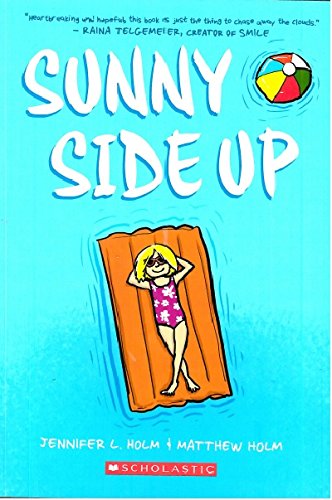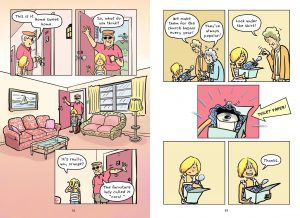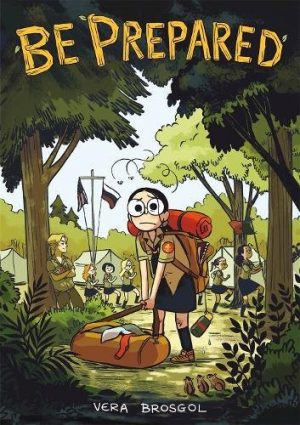Review by Ian Keogh
In 1976, ten year old Sunny is sent to Florida to spend a holiday with her grandfather. Disappointingly, in Vero Beach she’s two hours away from Disneyland and she seems the only child in the over 55’s community, a status requiring an identity pass.
Very successful with novels aimed at young girls, Jennifer L. Holm has long maintained a parallel career writing graphic novels illustrated by her brother Matthew. His cartooning is simple and expressive, the individual panels ideally suited to the young audience, but they might not be as pleased with the consistent padding employed. While acknowledging Sunny’s story is aimed at young readers, the process of spelling everything out makes for very laboured books. A more accomplished storyteller could cover the content far more efficiently, dispensing with large areas of white space around the panels, panels that serve no real purpose, and scene-setting illustrations occupying a full page. Removing all these would reduce Sunny’s story to half the page count, and presumably cut into everyone’s percentages.
Two threads are told in alternating chapters, starting with Sunny’s arrival in Florida and being picked up by her grandfather (six pages), and the year leading up to the holiday with assorted incidents from school and home. Some of these tie in nicely with the conversations Sunny has with another child she eventually meets, but many seem pointless interludes, designed to keep the template consistent, yet without enough to actually say. The 1976 setting suggests an autobiographical element, confirmed by the author notes in the back of the book, but there’s just not enough incident and not enough anecdotes that extend beyond the ordinary. Sunny sliding into a cat rescue business is nice, and while the explanations of heroes seem intrusive, there’s eventually a point to them. The final two chapters pull everything together, and these are good as the problems Sunny’s been having finally erupt.
Sunny Side Up has been created partially as an educational tool, to encourage children to talk about their problems, and to have them realise situations beyond their control are not their fault, which is admirable. However, it’s a heavily padded path to reach the essential scenes and make the essential points. Despite this, Sunny’s adventures have been successful enough to spawn two sequels, starting with Swing It, Sunny.





